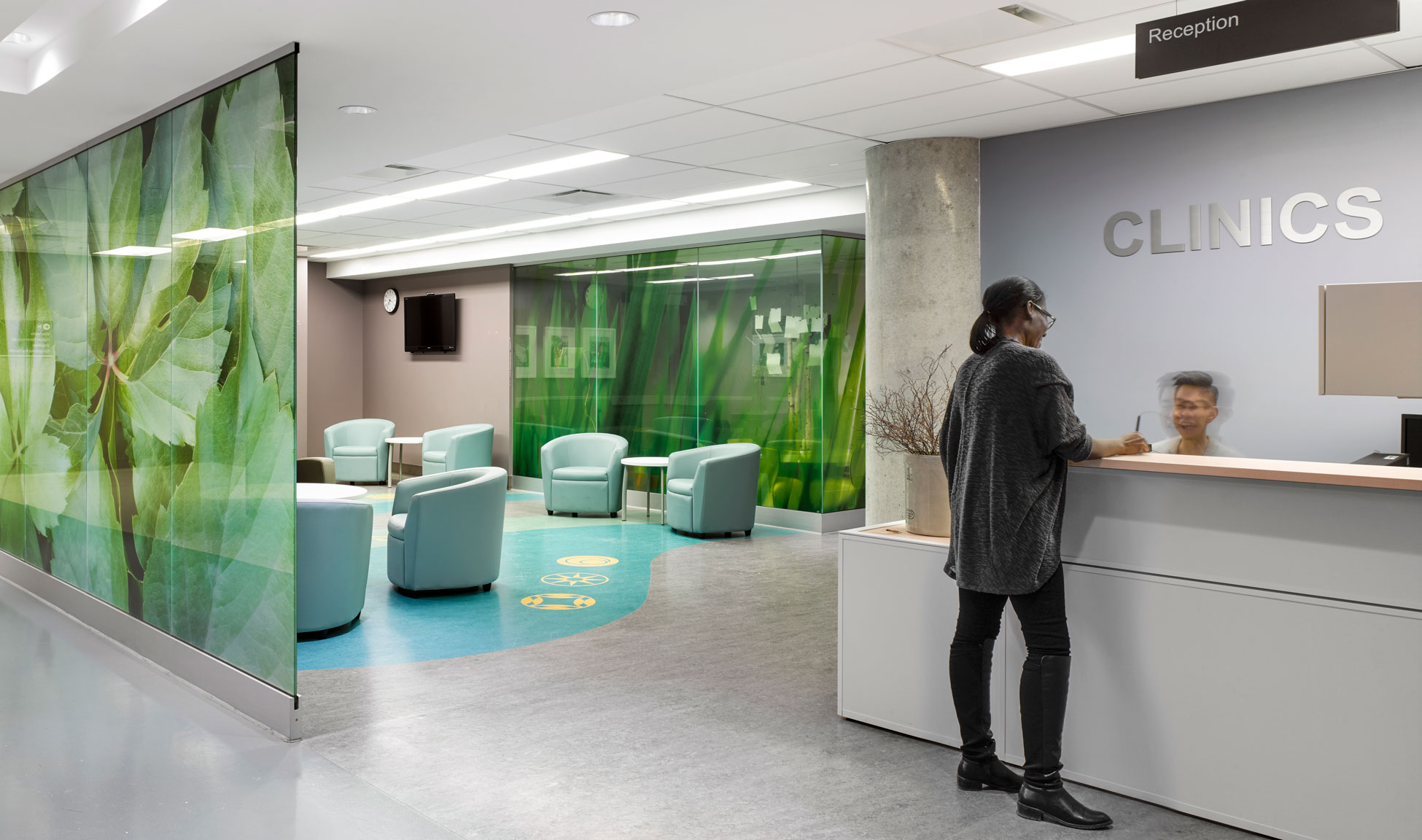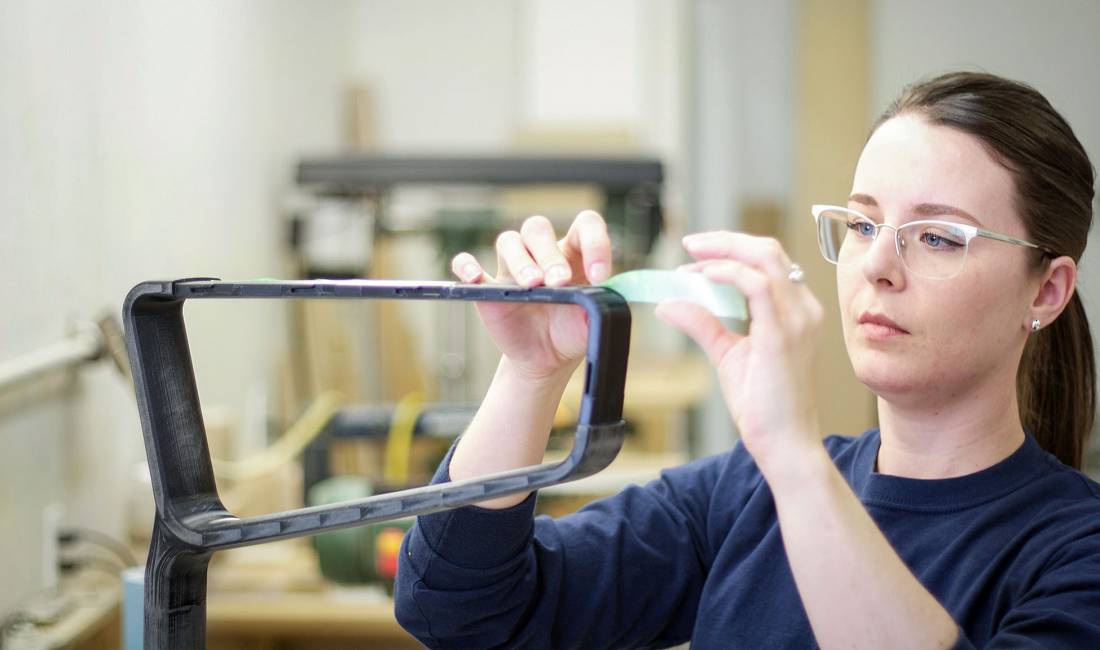The Rise of Ambulatory Care and its Impact on Design
Trend | April 27, 2023
As medical advances make what were once complex procedures routine, we are seeing healthcare delivery methods shift away from the traditional hospital model of care.
“Nowadays in ambulatory care, what we do in the outpatient arena is what we used to do 10 years ago in an inpatient setting,” says Chris Backous, a faculty member at the Virginia Mason Institute, a non-profit education and training corporation affiliated with Virginia Mason Medical Center, Seattle.5 Market research suggests that the ambulatory care healthcare sector will reach around $36 billion in 2023 in the US alone.1

Regional Integrated Cancer Center (CRIC). Photography by Patrick St-Arnaud.
Why ambulatory care is booming
It is easy to see why ambulatory facilities are so appealing to healthcare providers. Unlike acute care facilities (like hospitals), overnight stays for patients receiving ambulatory care are often not necessary.
Ambulatory care facilities can be built with less stringent requirements and shorter lifespans for their built environments, allowing them to keep pace with medical advancements.
For example, in the oncology field, a technological or medical breakthrough can render a facility built around a $25 million piece of equipment obsolete in an instant. As a result, cancer treatment facilities often have a three-to-five-year business plan, as opposed to the typical 30-to-50-year hospital facility lifecycle plan.6
Smaller, more flexible facilities, or even repurposed, existing buildings can be much more cost effective. Additionally, staffing and administration needs can be reduced as operations do not need to run 24/7.
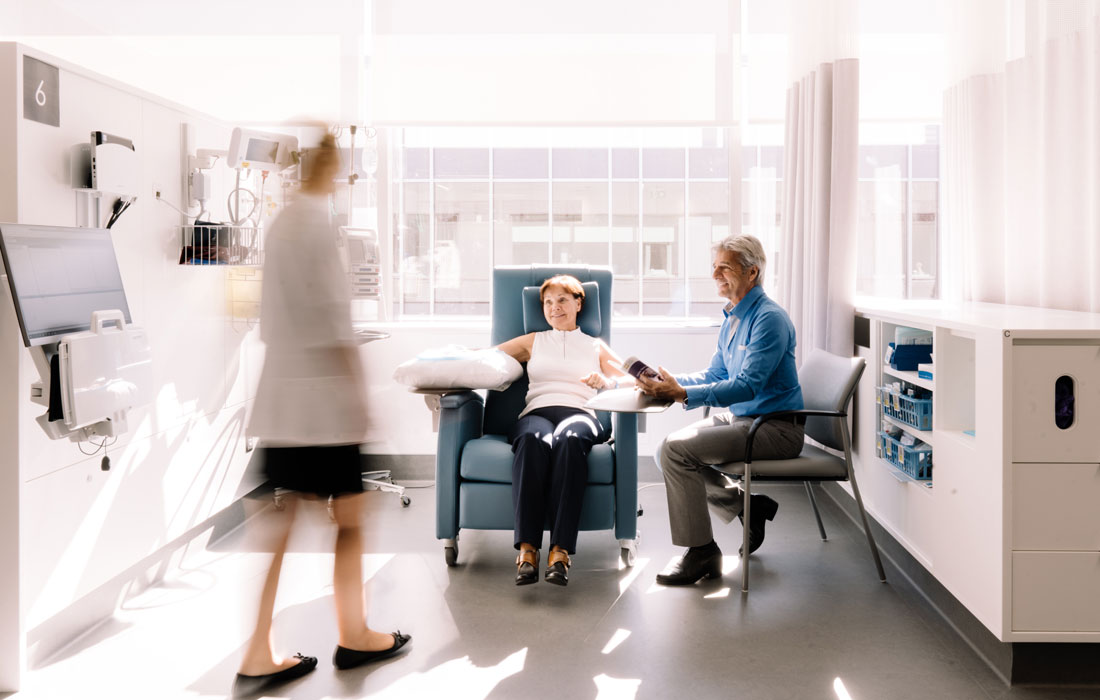

Regional Integrated Cancer Center (CRIC). Photography by Patrick St-Arnaud.
Designing flexible and responsive spaces
Adapting to changing medical practices and emerging technologies means facilities need greater flexibility in their design.
Ambulatory care clinics must be adaptable to meet ever-evolving technologies and changing patient demands. New developments in anaesthesia, pain control, and minimally invasive (also known as laparoscopic or keyhole) procedures have enabled numerous surgeries to migrate to ambulatory surgical centers (ASCs).¹
Growing research and evidence through various studies have shown the influence of well-designed environments on positive patient health outcomes, and poor design on negative effects including longer hospital stays. Designers are using evidence-based design (EBD) practices to support collaboration among healthcare teams.
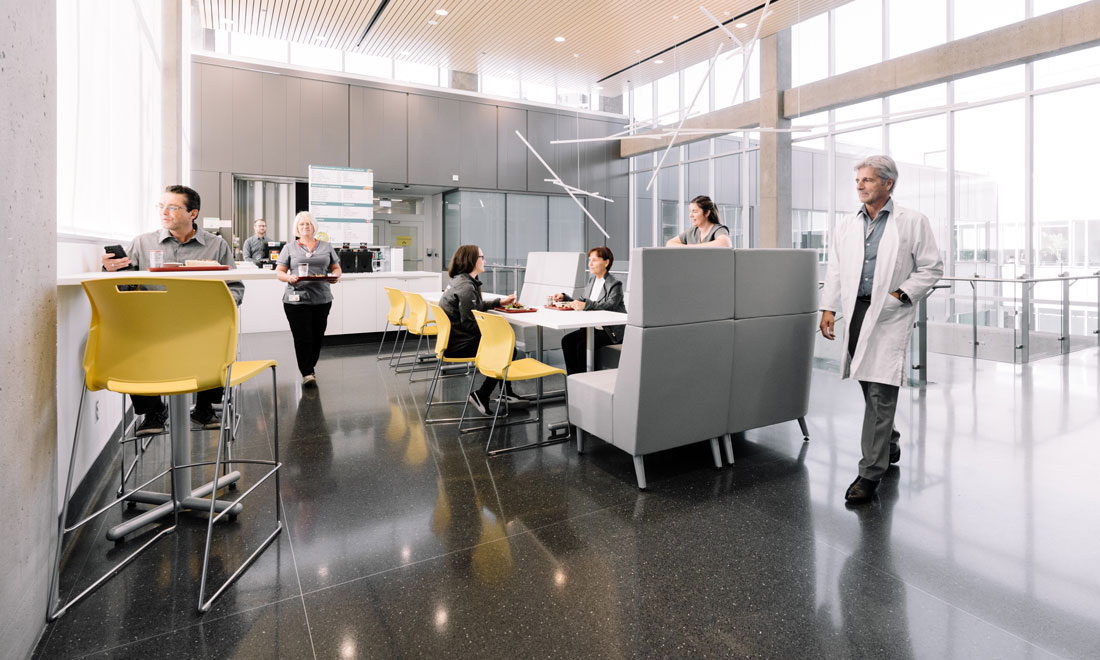
Regional Integrated Cancer Center (CRIC). Photography by Patrick St-Arnaud.
At the Health Sciences Centre (HSC) ambulatory care clinic in Winnipeg, MMP Architects utilized an on-stage and off-stage approach to minimize patient stress and increase teamwork and efficiency.
Private doctor offices are replaced with central pods where clinicians and staff share the space, with exam rooms radiating off the pods. Much like an office, this creates an open team-based environment that encourages both formal and informal consultation. Additionally, clinician spaces are augmented with separate staff lounges to offer comfortable and calming areas to support moments of much-needed respite for overworked healthcare workers.
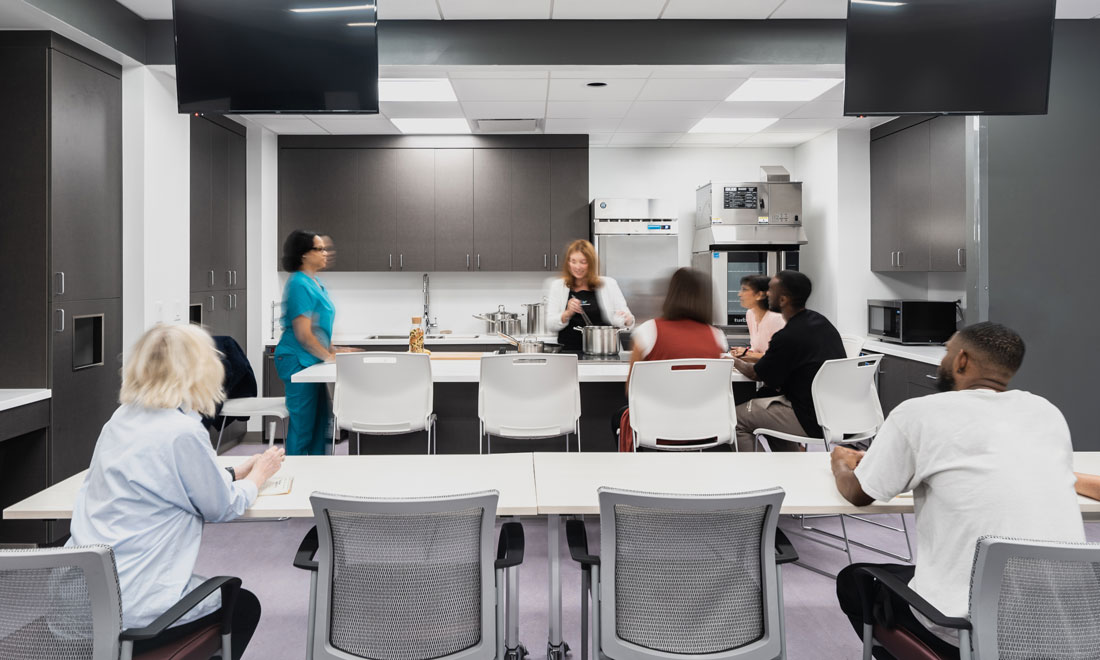
Main Line Health, Women's Specialty Center. Photography by Patrick St-Arnaud.
Accommodating inclusivity and broader patient needs
Patient convenience and comfort, and a healthcare organization’s visibility in the community are also key drivers in choosing ambulatory care sites.5
Now, more than ever before, patients have unprecedented choice and control over their healthcare experience. With a couple of clicks, patients can easily find their nearest clinic, read reviews, look up wait times, and book their appointments.2
In many areas, gone are the days when one had to spend hours in the car traveling to see a medical specialist or sit patiently all night in the emergency room. Urgent care centers, walk-in clinics and medical specialty complexes are popping up, even in retail strip malls.6
Now, more than ever before, patients have unprecedented choice and control over their healthcare experience. With a couple of clicks, patients can easily find their nearest clinic, read reviews, look up wait times, and book their appointments.2 Ambulatory care facilities are adapting to meet demands for better patient experience.
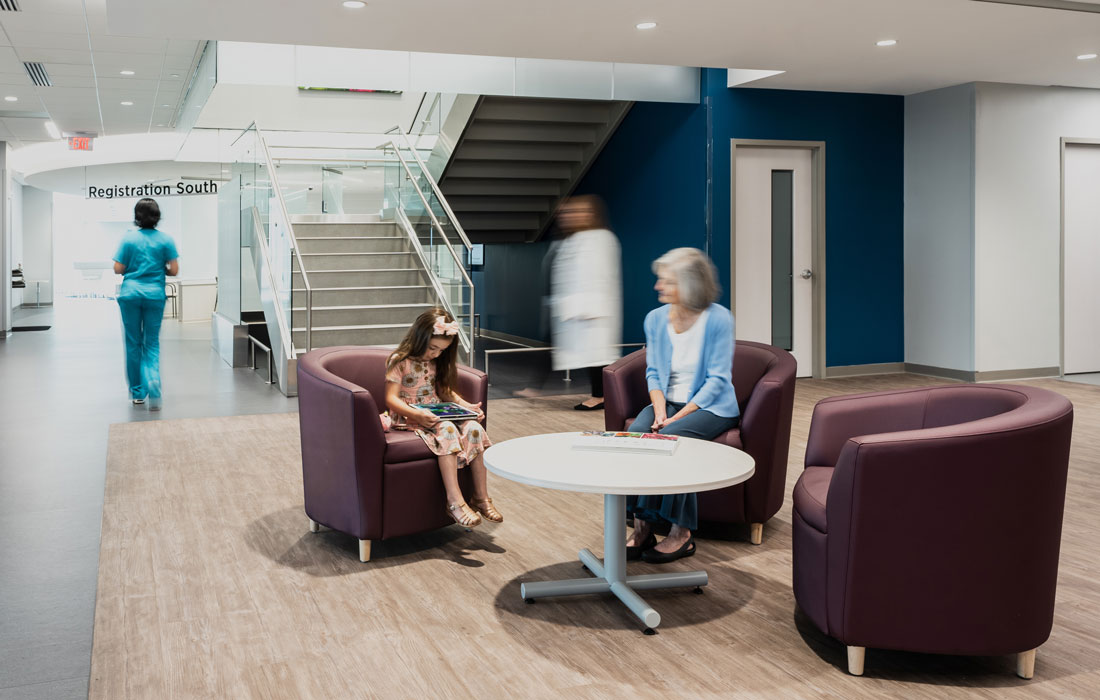
Main Line Health, Women's Specialty Center. Photography by Patrick St-Arnaud.
The imperative to attract and retain is driving how these spaces are being designed.
Ensuring an abundance of natural light, purposefully landscaped outdoor areas, sustainable building materials and systems found in newer and more attractive buildings are a must to soothe patients. Amenities such as valet parking, waiting areas with coffee shops and Wi-Fi access are now expected as a standard.3
Incorporating multipurpose spaces for community education helps knit these facilities into the fabric of the community. The COVID-19 pandemic saw many hospitals overwhelmed, with inpatient beds at or near full capacity, resulting in cancellations of numerous elective but often necessary surgical procedures. Ambulatory surgical centers can alleviate hospitals’ strain and also provide patients with a greater sense of personalized care in their community.
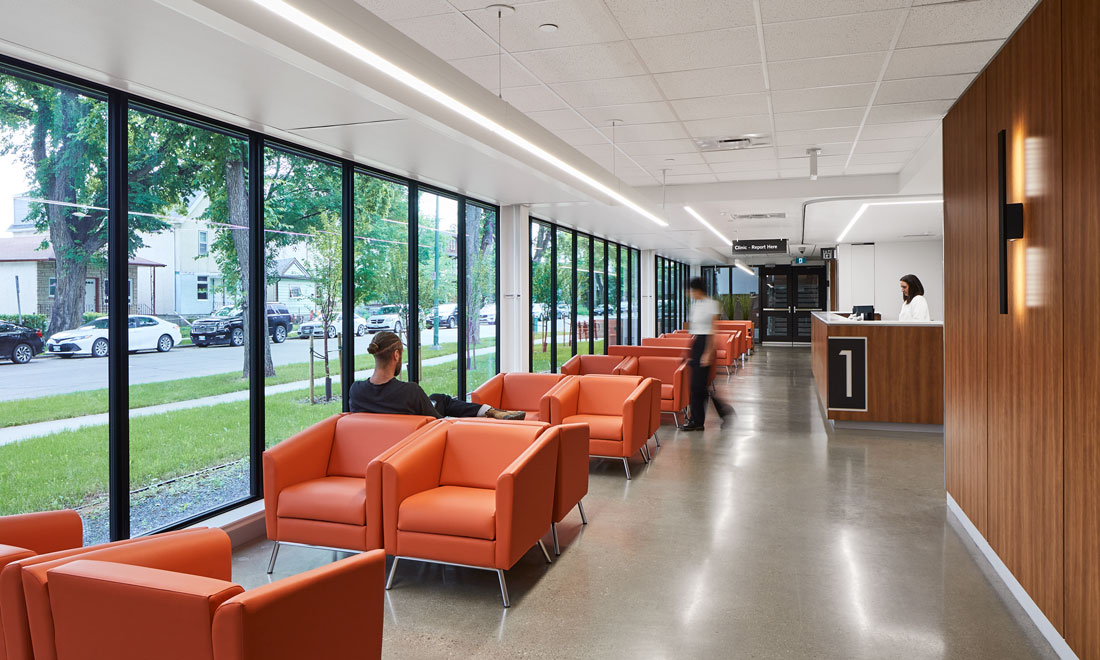
HSC Ambulatory Clinic. Photography by StationPoint Photographic.
Creating a welcoming environment that’s worth the wait
Waiting is still an important feature of most ambulatory care facilities and a key component of the patient experience.
A recent study undertaken by architecture firm Payette reveals some interesting trends in how millennials and baby boomers experience waiting. While the ideal waiting room for boomers is a quiet space that they can quickly leave, millennials didn’t register waiting as an issue until 15 minutes had passed.4
As millennials overtake boomers as primary healthcare users, even medical centres with shorter wait times will still require better design considerations. Providing space where they can multitask, plug in their phones and laptops, and get a cup of coffee is essential to millennials’ satisfaction.

Women’s College Hospital. Photography by A-Frame.
“If the waiting area has the right design and amenities, it can be a positive experience for millennials,” explains Scott Rawlings, Healthcare Design Director for Payette. However, he cautions, “If you stick them in an exam area only to wait ten minutes for a doctor, they won’t be as satisfied as being in a waiting room with amenities.”4
As more healthcare systems look to expand their ambulatory care facilities, designers will need to balance not only changing medical practices but also shifting patient preferences.

Main Line Health, Women's Specialty Center. Photography by Patrick St-Arnaud.
1Kumar, P., & Parthasarathy, R. (2022, September 3). Walking out of the hospital: The continued rise of ambulatory care and how to take advantage of it. McKinsey & Company. https://www.mckinsey.com/industries/healthcare/our-insights/walking-out-of-the-hospital-the-continued-rise-of-ambulatory-care-and-how-to-take-advantage-of-it
2Tullio, R. (2016, June 16). Design in City. Medical Construction and Design. https://mcdmag.com/2016/05/design-in-city-ambulatory-care-tactics-for-the-modern-healthcare-consumer/Leonard, Alison (2019, October 1). At Your Service: Reshaping outpatient facility design | Medical Construction and Design. Medical Construction and Design. https://mcdmag.com/2019/10/at-your-service-reshaping-outpatient-facility-design/
3Chenoweth, H. (n.d.). Designing for Millennials: 2020’s Ambulatory Care Center. https://info.healthspacesevent.com/blog/2020s-ambulatory-care-center-millennial-proof-design
4Designing Lean ambulatory care facilities. (n.d.). HFM | Health Facilities Management. https://www.hfmmagazine.com/articles/2139-designing-lean-ambulatory-care-facilities
5Slowey, Kim. (2016, October 6). Construction industry embraces a new wave of healthcare facilities. Construction Dive. https://www.constructiondive.com/news/construction-industry-embraces-a-new-wave-of-healthcare-facilities/427683/
6The Modern Ambulatory Care Facility - Parkin Architects Limited. (2015, April 26). Parkin Architects Limited. https://www.parkin.ca/blog/the-modern-ambulatory-care-facility/
HEADER IMAGE: Women’s College Hospital. Photography by A-Frame.
Enjoy this article? Don't forget to share.


